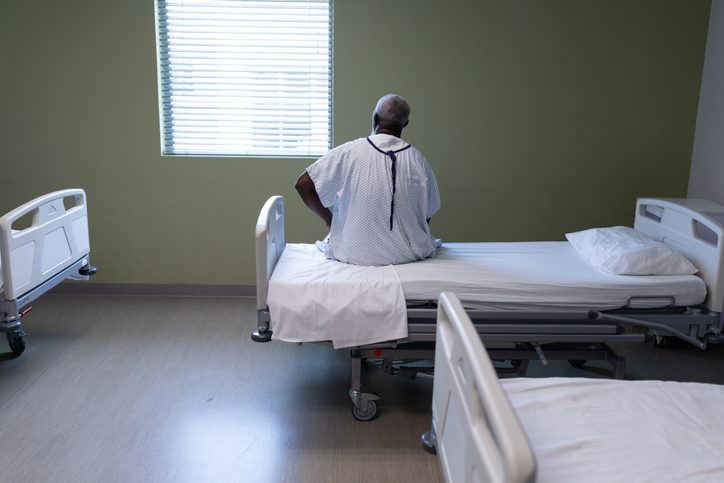When the government entered a partial shutdown Oct. 1, hospitals across the country faced a major task: discharging, relocating or shifting care programs for the thousands of patients in hospital at home programs.
With Congress at a standoff over healthcare cuts and Affordable Care Act premium tax subsidies, the body failed to reauthorize the Centers for Medicare & Medicaid Services’ (CMS’) pandemic-era Acute Hospital Care at Home program, along with Medicare telehealth services.
The CMS directed the 419 participating AHCaH hospitals to discharge or relocate Medicare hospital at home patients if Congress did not extend the waiver. Health systems received the notice about 60 days in advance of the Sept. 30 deadline, and they received periodic reminders as the shutdown drew near.
In the days before the shutdown, hospitals ramped down admissions to hospital at home programs . Since the lapse of the waiver, home hospital providers have entered a complex maze of regulations and decisions.
Pippa Shulman is the chief medical officer of DispatchHealth, which helps hospitals operate hospital at home programs. DispatchHealth merged with Medically Home in June, one of the early companies providing hospital-level care in the home, even before the COVID-19 pandemic.
State laws play a major part in how the programs have been affected since the waiver lapsed on Oct. 1. Some states have tied authorization of the program to the existence of the pandemic-era CMS waiver, while others allow Medicare Advantage and other commercially insured patients to participate in the care model regardless of the state of play of the CMS waiver.
“You’re basically saying to Medicare beneficiaries who are using their Medicare Part A services, you can’t have this so but folks on commercial insurance, folks who get Medicare Advantage, folks who live in states that do permit this, they are still able to access these services in some cases,” Shulman said. “So we’ve kind of created this inequity, and states have very different rules, and sometimes the rules that aren’t always clear.”
For example, New Jersey requires the CMS waiver to be in place for health systems to provide hospital-level care at home for all payers. Florida and Wisconsin have a similar “no waiver, no play” law, as Shulman put it, while California does not permit the program, waiver or not.
“California has never really allowed hospital at home, as [it’s] done in many other states, but there’s still a lot of ability to do acute care in the home, we just do it differently,” Shulman said. “We do it through reducing the length of stay for patients that have a long-length stay in the hospital. We do early supportive discharge for patients. So we’re doing hospital at home … It’s just not paid for under the waiver.”
In other states, hospital at home programs can operate without the waiver for commercially-insured patients. Even still, payers with certain benefits and contracts may still be allowed to exercise them and keep their members in hospital at home care, regardless of state law.
“It’s not black and white,” Shulman said. “It’s not clear in any of those states that it’s completely off the table or on the table, and particularly where you have a payer that might say, ‘Hey, I have a benefit for this,’ or ‘You have a contract for acute care in the home. Is that permitted?’ And in many cases, the answer may be yes, that is permitted. But you can imagine for health systems, this is a really difficult and hard-to-navigate time.”
Shulman explained that the AHCaH waiver only covered a small slice of at-home care models. Besides hospital at home, DispatchHealth provides emergency department visits in the home, skilled nursing facility care at home and hospitalization follow-up care. None of these programs are affected by the waiver, and patients in hospital at home care could potentially be shifted to a different at-home care model to avoid relocating them to the hospital.
“We are also trying to see how we can help programs pivot,” Shulman said. “If they are in states where they can pivot to be able to take non-Medicare Fee-for-Service patients, there are some technical hurdles that have to be addressed.”
Shulman could not provide an estimate of how many patients have had to return to an in-patient hospital bed. On average, though, she said 50% to 60% of patients in Medically Home’s affiliated hospital at home programs are Medicare patients. In some programs, the percentage of Medicare patients is 70% to 90%, Shulman said.
“We really wanted to keep that number [of relocated patients] small, but it certainly happened, and it certainly happened to colleagues’ programs across the country,” Shulman said. “I think that the impact that we see, though, is that two or three weeks ago, we had hundreds and hundreds of patients receiving care in their homes. And now we have very few patients, just on their commercial programs in a handful of states.”
DispatchHealth’s staff, future plans and operations have also been affected by the end of the waiver. Shulman said staff that worked on hospital at home have been moved to other projects temporarily to keep them working. The company is also having multiple meetings per day on the status of the waiver and shutdown.
Meanwhile, its plans for hospital at home expansion have been disrupted.
“Hospital systems, businesses like mine, are preparing for two different realities,” Shulman said. “They’re thinking about this program that has such an opportunity for expansion and innovation, and so they’re planning for new geographies, to go into new hospitals, to expand into new use cases at the same time as they’re planning for a potential interruption of uncertain length and uncertain impact. And that is an incredibly difficult thing to do and an incredibly difficult thing for any market to absorb. And so what we really have is a stifling of innovation and growth to something that is almost universally desired by physicians, patients, caregivers [and] the systems.”
Many lobbyists in Washington are continuing to press Congress to re-authorize the AHCaH waiver, including advocacy group Moving Health Home.
“On the congressional side, we are obviously still hoping for an extension,” Rikki Cheung, senior director of Moving Health Home, said in an interview before the government shut down. “Hospital at home has two vehicles right now. They have the congressional continuing resolution, so the government funding vehicle, and obviously, as you’ve seen, the Republicans and Democrats have different time frames for that. And then, relatedly, there’s a standalone bill, the Buchanan bill, that the House Ways and Means advanced, which is a five-year extension.”
Cheung said that some congressional staff have expressed a desire to separate the hospital at home legislation from the CR and fast track its passage. The Acute Hospital Care at Home waiver does not add any additional cost to the Medicare program, which makes an extension easier to pass, Cheung said.
“This would be good because then hospital home will be extended for a longer period of time, for five years,” she explained. “And also it’s not limping along with the continuing resolution extensions. The con is that it’s not really attached to a must-pass vehicle, like the government has to get funded. And so it’s a little bit on its own there, and so it’ll be up to leadership to decide whether it goes on the floor. But it sounds like, from all the discussion, that hospital at home is a pretty bipartisan priority for everyone.”
Publisher: Source link









